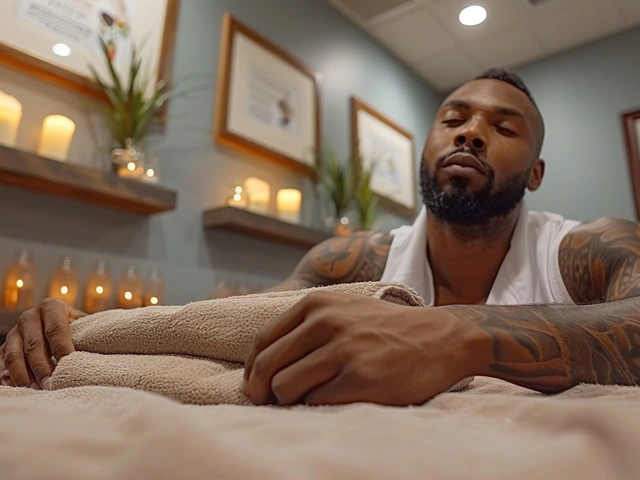Acupuncture: real relief without drugs
Ever tried a therapy that uses hair-thin needles and actually helps your pain or sleep? That’s acupuncture. People come for headaches, back pain, stress, and to feel more balanced. It’s not mystical—it's a simple, targeted way to nudge your nervous system and blood flow so your body can calm down and repair itself.
Acupuncture sits next to treatments you already know: acupressure, massage, and bodywork. If you like hands-on methods (like acupressure or Amma massage), acupuncture can be a powerful add-on. While acupressure uses firm pressure with fingers, acupuncture reaches deeper by stimulating specific points with tiny needles.
How acupuncture works — plain and practical
Acupuncturists place very thin, sterile needles at points around your body. That touch triggers local changes — more blood flow, reduced muscle tension, and shifts in nerve signaling. Those changes can lower pain signals and ease stress hormones. Many people report feeling relaxed, lighter, or clearer-headed after a session.
Sessions target symptoms and patterns. For example, chronic neck pain gets points around the neck, shoulder, and sometimes the leg. Migraines often involve points on the head, hands, and feet. The approach is practical: treat where it helps most, not where it looks fancy.
What to expect and smart safety tips
First visit: expect a short chat about your health, a quick exam, and the needles. Needles are thin — most people feel a tiny pinch or a dull ache, then a warm or heavy sensation. A typical session lasts 30–60 minutes. Many people nap.
Plan for a series. One visit can help, but chronic problems usually need 4–8 sessions over weeks. Track changes: sleep, pain scores, energy. If something improves, keep a maintenance schedule — monthly check-ins work for many people.
Safety basics: use licensed practitioners who use single-use, pre-sterilized needles. Tell your practitioner if you take blood thinners, are pregnant, or have a pacemaker. Avoid heavy exercise or alcohol right after a session; gentle movement and water are better.
Choosing someone good: read reviews, check licensing in your area, and ask about training. A short, clear intake and a calm treatment space are signs of a professional who knows what they’re doing.
Combine acupuncture with self-care. Pair it with at-home acupressure, gentle stretching, or a massage after a few sessions to extend results. If you’re dealing with chronic pain, try tracking one clear goal (sleep better, reduce a specific pain) so you know if it’s working.
If you want a low-risk, evidence-backed option for pain or stress, acupuncture is worth trying. Book a consultation, ask about safety, and go in with a simple goal. Most people leave thinking it was time well spent.

Acu-Yoga for Beginners: Integrating Acupuncture with Yoga Practices
Acu-Yoga blends the principles of acupuncture and yoga, offering a unique approach to holistic healing. Ideal for beginners, this guide explores the basics of Acu-Yoga, its health benefits, and essential practices. Through simple, step-by-step instructions, learn how this fusion can alleviate stress, enhance energy flow, and improve overall wellbeing. Discover practical tips for integrating Acu-Yoga into your daily routine, ensuring a balanced and healthier lifestyle.
Categories
- Health and Wellness (148)
- Alternative Therapies (86)
- Massage Therapy (40)
- Travel and Culture (15)
- Beauty and Skincare (9)
- Holistic Health (8)
- Health and Fitness (5)
- Spirituality (5)
- Other (2)
- Personal Development (2)



